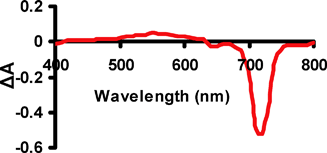The preparation of water-soluble indium(III)phthalocyanine complexes is described for the first time in this study. Peripherally and non-peripherally 3-hydroxypyridine tetrasubstituted indium(III) phthalocyanines (5a, 6a) and their quaternarized derivatives (5b, 6b) have been synthesized and characterized by elemental analysis, IR, 1H NMR spectroscopy, electronic spectroscopy and mass spectra. The quaternarized compounds (5b, 6b) show excellent solubility in water, which makes them potential photosensitizers for use in photodynamic therapy (PDT) applications. Photochemical and photophysical measurements were conducted on 3-pyridyloxy appended indium(III) phthalocyanines in dimethylsulfoxide (DMSO) for non-ionic (5a, 6a) and in both DMSO and water for quaternarized (5b, 6b) derivatives. General trends are described for quantum yields of photodegradation, fluorescence lifetimes, fluorescence quantum yields, triplet lifetimes and triplet quantum yields as well as singlet oxygen quantum yields of these compounds. The singlet oxygen quantum yields (ΦΔ), which give an indication of the potential of the complexes as photosensitizers in applications where singlet oxygen is required (Type II mechanism) are very high (ΦΔ > 0.55). Thus, these complexes may be useful as Type II photosensitizers.

You have access to this article
 Please wait while we load your content...
Something went wrong. Try again?
Please wait while we load your content...
Something went wrong. Try again?


 Please wait while we load your content...
Please wait while we load your content...